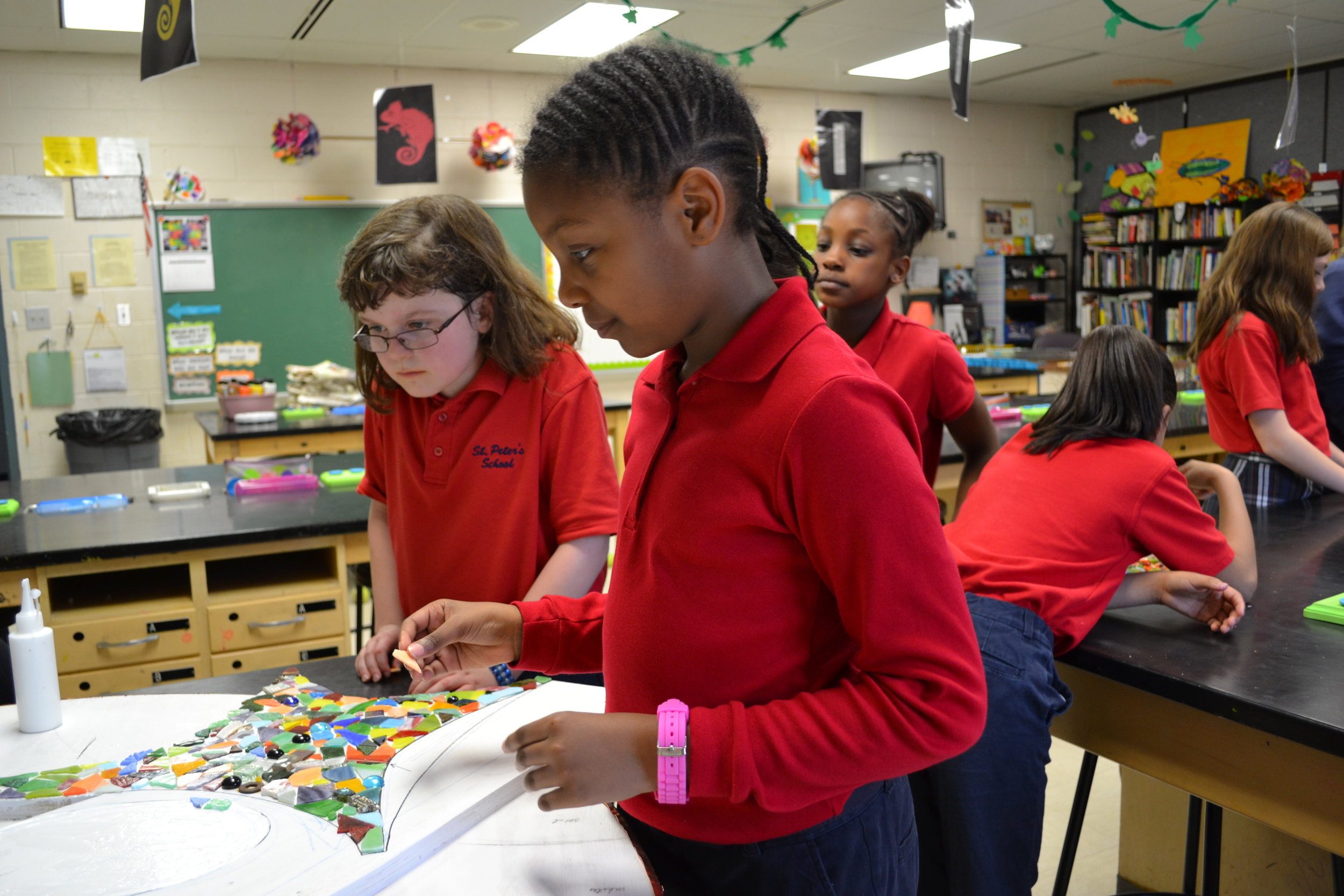This article was originally published in the Winter 2016 issue of Cardinal Matters: A Publication for Alumni, Parents & Friends of Cardinal Newman School in Columbia, SC.
“The drive from the airport was sobering — a mayhem of cars and people; horns blaring; young boys beating on the van glass, yelling, trying to sell us food and water; potholes; deep ruts; goats rummaging through heaps of trash and ruble. And I am told this is an improvement. What hope do we have of making a difference in just ten days?”
This was my first journal entry on day one of our mission trip to Haiti. We departed July fifth, the day after our country celebrated how blessed we are. We flew into a country also blessed with hope, pride, resourcefulness, and ingenuity but so lacking in the other components that make our system work and theirs not: leadership, law and order, a working infrastructure, economy, and a health care system. We have the luxury in the United States of complaining about these things for not working well enough, but in Haiti they just don’t work at all. As a result, the poorest country in the Western Hemisphere rests two hours by plane south of the richest.
“This bougainvillea-draped space is an oasis in a rumbled-up world. No rest for the weary; sleep was intermittent; roosters and barking dogs were our companions throughout the hot, still night. Thank God for the fan — until the generator died. A cold shower was welcomed. Only Mr. Brown, tall walls and razor wire keep us safe. (We are told one does not sleep in Haiti as much as rest.) Our delightful host, Phil, and the cooks are amazing. “
I am describing My Fathers Guest House, run by the organization Haiti Under God (HUG), our home base in Port-Au-Prince, where twelve of us from Columbia, ate, prayed, played, and “rested” for ten days. I was invited by one of the board members to join this trip as a sort of “artist-in-residence.” I planned and implemented several mosaic art projects with 18 young girls who lived in an orphanage supported by HUG. Our goal was not only to teach them a new skill, but also to bring them hope and beauty in a sometimes weary and ugly world. Accompanied by our Haitian hosts, Pastor Maxeau, Ginnette, (the girls house mother) and Surge (more like “Surge!” because he always greeted us with his joyful booming baritone and a hug) — we traveled to Valley of Hope and Cha-Cha Mountain where we dispersed supplies, conducted vacation bible schools for the children and the mosaic art projects. We prayed, sang, and shared our gifts, both material and intangible, and were enveloped by a joy and love that was pure and uninhibited.
“The sun was blazing hot so we decided to postpone grouting until the afternoon. We walked down to the girls’ home to inspect the garden the men were building. The girls live in a safe, clean home but it is sparsely furnished. One light bulb hanging from the ceiling illuminates their living space. The girls store their belongings in boxes under their beds. The laundry room consists of a rain barrel, several buckets and two large, wide-rimmed bowls all on the back stoop. Their clothes hang amidst the palm trees, dappled sun, blowing like flags in a balmy breeze. This is a painting.”
The artist and art teacher in me emerged often. Haiti is rich with material to paint, to compose, to capture. It is rich with ironies — beauty next to filth; deprivation next to ingenuity; and lawlessness next to hope and joy. And all we had to do to see all of this was to pivot our heads a degree or two. Within that context, my artist brain was teaming with ideas. As an art teacher, I couldn’t help but realize the skills I was able to bring to the Haitian girls and women with whom I worked was a direct result of the skills I have learned here at Cardinal Newman. I would never have been able to organize 18 girls whose language I do not speak to create these beautiful mosaics if I had not had that experience here. I would not have had the confidence to lead a group of grown women in mosaic making had I not had that experience here with the adult workshops I have done with our teachers and parents. I was but a conduit through which the myriad lessons I have learned through my students and faculty flowed to the Haitian people. And that channel flows both ways. I have brought back patience, appreciation, new organizational skills, and a joy for art, knowing that it is a true universal language.

















































